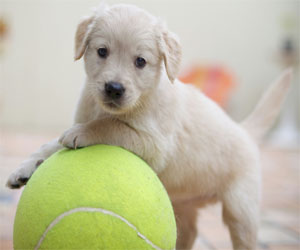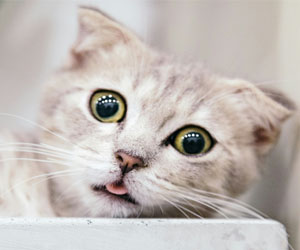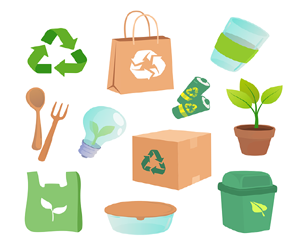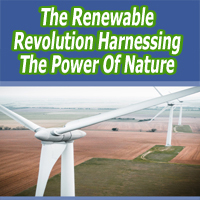


A World Of Skill, Agility, And Bonding

Canine competitions have grown in popularity over the years, offering a platform for dog owners and their four-legged companions to showcase their skills, agility, and the remarkable bond they share. These events encompass a wide range of activities, from agility trials to obedience contests, and even more specialized competitions like herding and retrieving trials. In this article, we'll delve into the exciting world of canine competitions, highlighting their significance, diversity, and the benefits they bring to dogs and their owners.
One of the most well-known canine competitions is agility trials. These events test a dog's speed, agility, and ability to navigate a challenging obstacle course. Dogs must navigate through tunnels, weave through poles, and leap over hurdles while responding to their owner's commands. The teamwork required between dog and owner is nothing short of remarkable. The bond formed during these trials is a testament to the trust and communication between them.
Obedience competitions, on the other hand, emphasize a dog's ability to follow commands and exhibit self-control. Dogs must perform a series of commands, such as sitting, staying, and heeling, with precision. These competitions not only showcase the dog's obedience but also their intelligence and the training efforts invested by their owners.
Herding trials are an excellent example of competitions that tap into a dog's innate instincts. Breeds such as Border Collies and Australian Shepherds excel in these trials, as they are natural herders. In these contests, dogs are tasked with herding a group of livestock through a course, demonstrating their herding skills, control, and adaptability.
Retrieving trials are designed for breeds known for their retrieving abilities, such as Labrador Retrievers and Golden Retrievers. These competitions involve tasks like retrieving a dummy or an object from water, showcasing the dog's strength, swimming ability, and willingness to retrieve objects for their owner.
Apart from honing a dog's physical and mental abilities, canine competitions offer numerous benefits. For dogs, they provide essential exercise and mental stimulation, contributing to their overall well-being. These competitions also foster socialization, as dogs interact with other canines and their owners, helping them become more well-adjusted pets.
For dog owners, participating in canine competitions is an opportunity to deepen their bond with their furry friends. The trust and teamwork required to excel in these events create a unique connection between the two, enhancing their companionship. It's a chance for owners to learn more about their dog's capabilities and build a stronger, more harmonious relationship.
Moreover, canine competitions can be an educational experience for owners, offering a platform to refine their training techniques and learn from seasoned competitors. The sense of achievement derived from successfully competing with one's dog is immensely rewarding and can boost confidence in both dog and owner.
Canine competitions are not just about showcasing a dog's talents; they are a celebration of the incredible bond between humans and their canine companions. Whether it's agility, obedience, herding, or retrieving trials, these events are a testament to the remarkable partnership formed between dogs and their owners. They provide a venue for exercise, mental stimulation, and socialization while deepening the connection between dog and owner. Canine competitions are a world of skill, agility, and bonding that brings out the best in both dogs and the people who love them.
A Guide To Feline Well-Being
 2. Regular Veterinary Care
2. Regular Veterinary Care
Routine veterinary care is crucial for maintaining your cat's happiness. Regular check-ups and vaccinations are essential for preventing illness and ensuring your cat's well-being. Your veterinarian can also address any health issues and provide guidance on preventive care.
3. Emotional And Social Needs
Cats may be independent, but they are not solitary creatures. They require social interaction and affection. Spend quality time with your cat, petting and talking to them. Building a strong bond with your cat is a surefire way to enhance their happiness.
4. Mental Stimulation
Cats are curious creatures that need mental stimulation to be content. Provide them with toys, puzzles, and interactive playtime. Toys like feather wands, laser pointers, and treat-dispensing puzzles can keep your cat engaged and mentally active.
5. Grooming And Hygiene
Regular grooming is essential for your cat's well-being and happiness. Brush your cat to prevent matting and reduce shedding. Cats may also require occasional baths. Keeping their claws trimmed and providing scratching posts helps maintain their hygiene.
6. Safe Environment
Creating a safe environment is crucial for your cat's happiness. Remove hazards, keep toxic substances out of reach, and offer stimulating objects and areas for exploration. Cats enjoy window perches, scratching posts, and safe outdoor spaces if available.
7. Watch For Signs Of Illness
Cats are adept at hiding signs of illness, so it's essential to watch for any unusual behavior or appearance changes. If you notice anything out of the ordinary, consult your veterinarian promptly.
What Your Feline Friend Is Saying
 Meowing: Meowing is perhaps the most well-known cat vocalization. Cats may meow to greet you, ask for food, or seek attention. The tone and intensity of the meow can provide clues about their feelings.
Meowing: Meowing is perhaps the most well-known cat vocalization. Cats may meow to greet you, ask for food, or seek attention. The tone and intensity of the meow can provide clues about their feelings.
Purring: Purring is generally a sign of contentment, but cats may also purr when in pain or discomfort, as it can be a self-soothing mechanism.
Hissing And Growling: These vocalizations are defensive and signify fear or aggression. A cat hisses or growls when feeling threatened or cornered.
Chirping And Chattering: Some cats make chirping or chattering sounds when they observe birds or small prey animals outside. It's believed to be an expression of excitement or frustration.
2. Body Language:
Cats use their bodies to convey a multitude of messages:
Tail Position: The position of a cat's tail is a significant indicator of their mood. A high, straight tail often means they are happy or confident, while a puffed-up tail indicates fear or aggression.
Ears: The position of a cat's ears is essential. Forward-facing ears suggest interest, while flattened ears signal anger or distress.
Whiskers: When a cat's whiskers are relaxed and fanned out, it often signifies contentment. When they are pulled back tightly against the face, it may indicate fear or aggression.
Eye Contact: A slow blink from a cat is a sign of trust and affection. Prolonged direct eye contact, on the other hand, may be seen as a challenge or a threat.
Paving The Way For A Greener Planet
 Clean And Renewable Energy Generation
Clean And Renewable Energy Generation
One of the most significant advantages of WtE technology is the production of clean and renewable energy. When waste is burned or otherwise processed in WTE facilities, it generates electricity and heat. This not only reduces the burden on conventional power sources but also contributes to a significant reduction in greenhouse gas emissions.
Mitigating Environmental Pollution
WTE technology plays a vital role in mitigating environmental pollution. By incinerating waste at high temperatures, harmful pollutants are filtered out, ensuring that emissions are well within permissible limits. This reduces the release of toxic substances into the atmosphere and lessens the strain on our environment. Moreover, the controlled conversion of waste reduces the risk of groundwater contamination that can occur in landfills.
Reducing Dependence On Fossil Fuels
As the world strives to reduce its dependence on fossil fuels, WTE technology offers a crucial alternative. By converting waste into energy, we decrease the need for non-renewable resources and cut carbon emissions. This is a significant step towards achieving a more sustainable energy mix and combating climate change.
Promoting A Sustainable Future
Waste-to-energy technology is not just about waste disposal; it's about creating a more sustainable future. It promotes a circular economy by reusing valuable resources from waste. This process conserves natural resources and helps ensure a sustainable supply of energy for generations to come.






Paving The Way For A Sustainable Future
 Renewable Energy's Ascent: One of the most promising avenues for fossil fuel transition is the rise of renewable energy sources. Solar, wind, hydro, and geothermal power have experienced exponential growth, proving their capacity to provide cleaner, more sustainable alternatives. These sources are abundant, environmentally friendly, and increasingly cost-competitive. Solar and wind, in particular, have emerged as game-changers, offering efficient and scalable solutions for power generation.
Renewable Energy's Ascent: One of the most promising avenues for fossil fuel transition is the rise of renewable energy sources. Solar, wind, hydro, and geothermal power have experienced exponential growth, proving their capacity to provide cleaner, more sustainable alternatives. These sources are abundant, environmentally friendly, and increasingly cost-competitive. Solar and wind, in particular, have emerged as game-changers, offering efficient and scalable solutions for power generation.
Challenges And Obstacles: The transition from fossil fuels is not without its challenges. A major obstacle is the existing infrastructure and economic dependence on fossil fuels. Many industries, jobs, and economies are intricately tied to the fossil fuel sector. Transitioning away from these sources must be managed carefully to minimize economic disruption and job losses.
Another challenge is the intermittency of some renewable energy sources. Solar and wind energy production can be inconsistent, depending on weather conditions.
 Meditation And Mindfulness: Practicing meditation and mindfulness during the day can enhance your ability to remember and explore dreams. These practices promote awareness and encourage a deeper connection with your inner thoughts and feelings.
Meditation And Mindfulness: Practicing meditation and mindfulness during the day can enhance your ability to remember and explore dreams. These practices promote awareness and encourage a deeper connection with your inner thoughts and feelings.
Mnemonic Induction Of Lucid Dreams (MILD): MILD is a technique developed by Dr. Stephen LaBerge, a pioneer in lucid dream research. It involves setting a strong intention to remember your dreams and become lucid while repeating a specific mantra or affirmation as you fall asleep.
Wake-Back-To-Bed (WBTB): The WBTB technique involves waking up during the night and then going back to sleep with the intention of becoming lucid. This method takes advantage of the increased likelihood of entering a dream directly from the waking state.
Visualization: Before sleep, visualize your dream scenario or the type of dream you wish to have. This technique encourages your subconscious mind to construct dreams around your visualization.
Progressive Relaxation: Progressive muscle relaxation techniques help induce a calm and relaxed state before sleep, making it easier to enter the dream world with a clear and focused mind.
Dream Incubation: Dream incubation involves setting a specific question or problem you want to solve in your dreams before falling asleep. By focusing on the question, you are more likely to receive insights during your dreams.
Lucid Dream Induction Methods: Various methods, such as the Wake-Induced Lucid Dream (WILD) or the Mnemonic Induction of Lucid Dreams (MILD), can help individuals become aware and take control of their dream experiences.